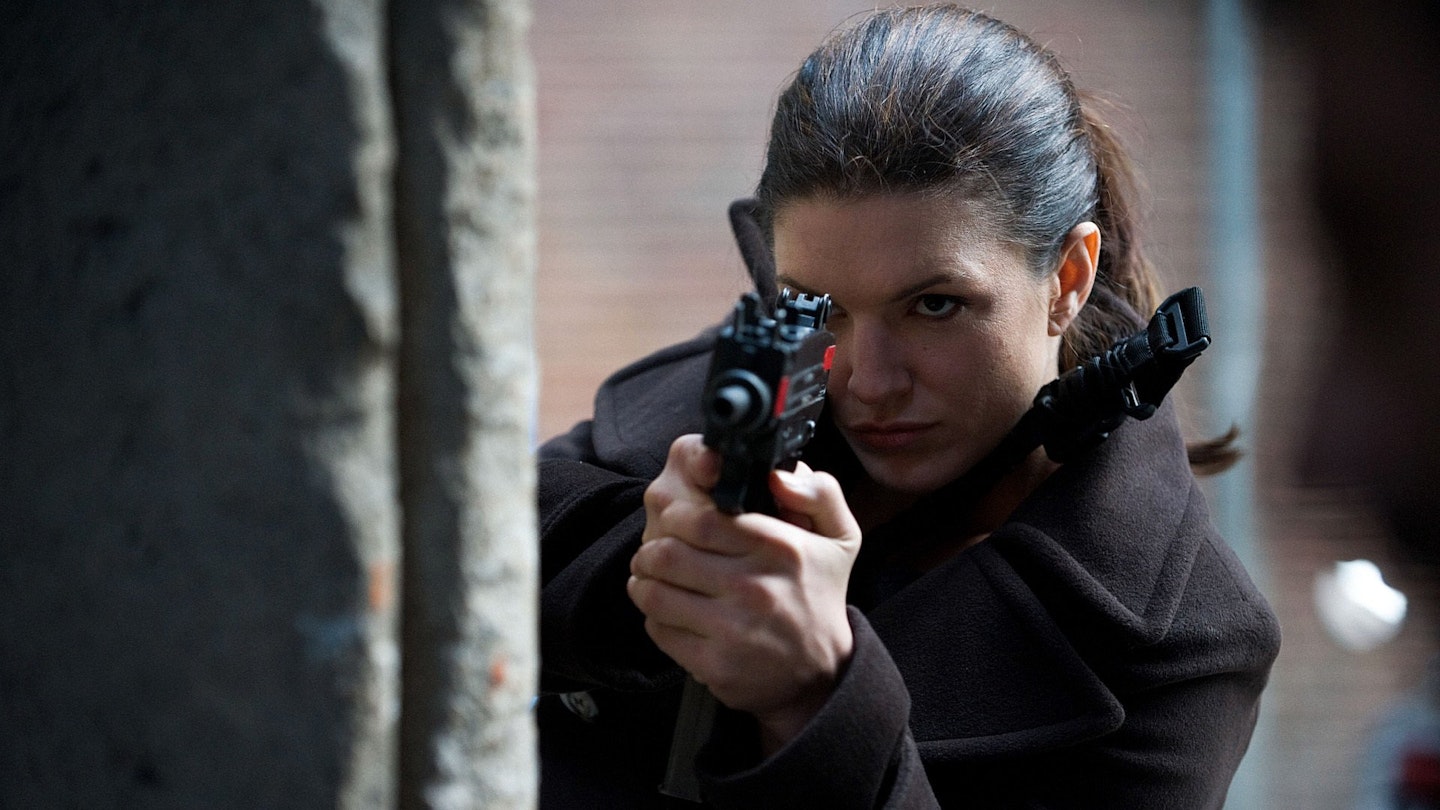Haywire hits cinemas this week, starring the kickass and extraordinarily cool Gina Carano as a CIA-trained, independent contractor who goes on the run and starts opening up huge barrels of whoop-ass after someone, somewhere marks her for death. It’s directed by Steven Soderbergh and co-stars a host of famous faces – but the fact remains that Carano herself isn’t well known outside mixed martial arts (MMA) and stunt circles. So how do filmmakers entice audiences in to see newcomers like this given a chance? We examine a few previous successful strategies...
Haywire’s already gone this route, adding the likes of Ewan McGregor, Antonio Banderas, Michael Douglas, Michael Fassbender and Channing Tatum to the cast around Carano. But it’s a very common approach to surround lesser-known leads with established talent to give the film that veneer of class. Whether it’s a raft of talented character actors – as in John Carter, say, or The Hunger Games – or a plethora of no-question-about-it stars – as in Tim Burton’s Alice In Wonderland – doesn't really matter. This is distinct, incidentally, from a truly ensemble piece: there *is *a lead here, identifiable by the fact that they’re the one person onscreen you don’t recognise.
Never heard of Michael Stuhlbarg? Doesn’t matter! Chances are that if you go to see A Serious Man it’s because you’ll pretty much go see anything that the Coen Brothers produce, because – dagnabbit – that pair know what they’re about. The same goes for a small but select group of directors who can cast anyone they like because it’s their name that’s the selling point. Steven Spielberg more-or-less takes this approach with War Horse: to the extent that there’s a lead there, it’s newcomer Jeremy Irvine, and he’s surrounded not by big names but by other character actors and about-to-be-huge-stars like Tom Hiddleston and Benedict Cumberbatch. It’s Spielberg’s name that has guaranteed a wide opening.
This is often employed when the lead is an unknown and the part a desirable and talked-about one. The classic instance is, of course, the search for Scarlett O’Hara in Gone With The Wind, wherein genius producer David O. Selznick met with eventual star Vivien Leigh very early in the casting process, but kept the publicity rolling with repeated claims to be talking to every starlet in the world and any number of wannabes about the part as well. By the time Leigh was confirmed in the role, it was big enough news that *everyone *heard her name. The same strategy was used for Harry Potter and is common in Bond casting, but a more recent example – albeit a slightly less cynical one, we suspect – was David Fincher casting Rooney Mara in The Girl With The Dragon Tattoo.
This is the name of the game in comic-book movies. Christopher Reeve, Brandon Routh, Chris Hemsworth, Hugh Jackman – all were unknowns when they were catapulted into the spotlight after landing a superhero role. There’s a strong argument, in fact, that the more iconic the character in advance of production, the less you want a big star: you don’t want the star’s baggage distracting from his nice shiny claws or flappy red cloak. Tobey Maguire or Christian Bale, pre-Spider-Man and Batman respectively, are about as starry as you want to go – and both were, let’s face it, indie rather than mainstream leading men. After all, casting a star in Daredevil didn’t exactly pay off…
While Shia LaBeouf had had supporting roles in a few proper blockbusters and enjoyed success in his own right with Disturbia, he was pretty much unknown when he was cast in Transformers. Still, never mind: did you see that bit in the trailer where the robots chase one another along the freeway? AMAZING. And sure, you’re not sure who Leo Whatsit or Kate Whozzit are, but you’re probably up for watching one of the biggest disasters of the 20th century onscreen, if only to see more of that bit in the trailer where the guy bounces off the propeller. This also goes for Sam Worthington and Zoe Saldana in Avatar: while both are intensely likeable screen presences and decent actors, we all really went for the blue stuff. Sorry guys.
You know who’d heard of Sigourney Weaver prior to Alien? Practically no-one – but Ridley Scott made his case, convinced the studio and got his choice for Ripley. If you’ve got the right person, just shoot a few more screentests until you wear the studio down and convince them you’ve got the right person. There’ll always be time to turn your star into an actual star later. Your confidence may pay off: Roland Emmerich gave the Fresh Prince of Bel Air a chance in Independence Day, and that didn’t turn out so badly. The fact that no one had heard of Harrison Ford or Mark Hamill didn't exactly hurt Star Wars either. If they have the charisma and the talent you need, things will probably turn out OK.
